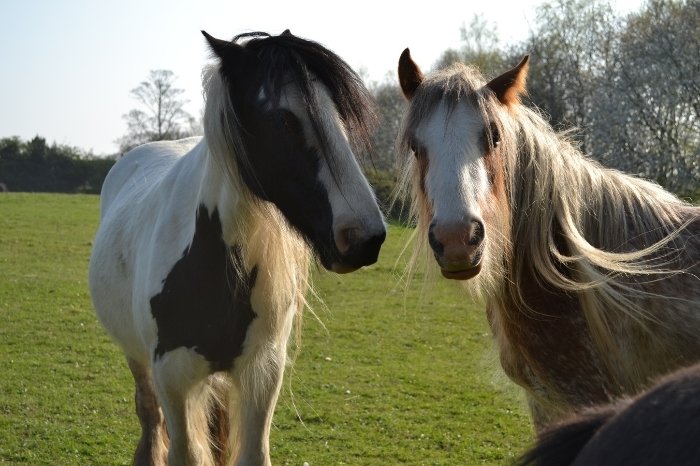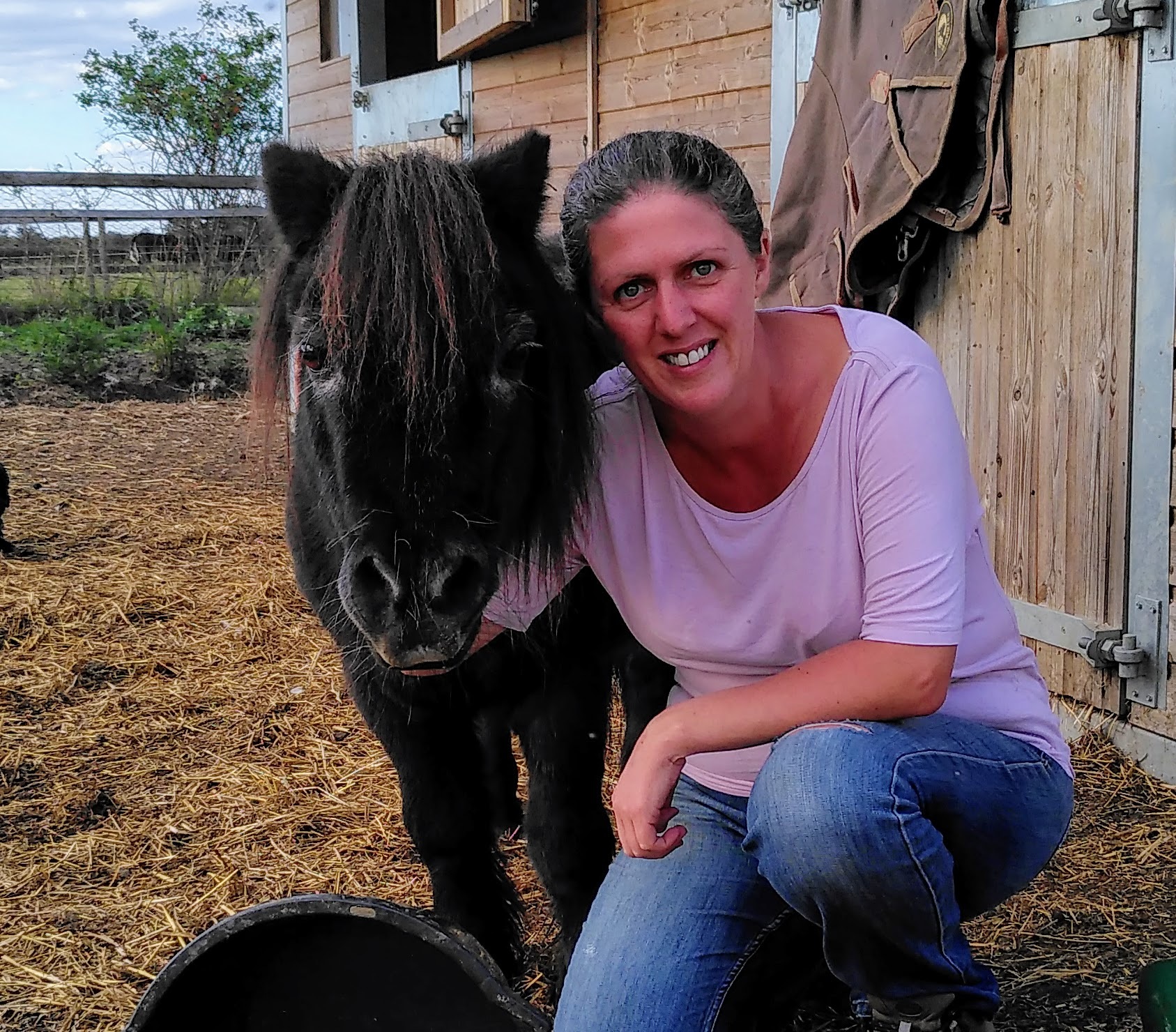Last Updated on October 23, 2022
Warts on a horse’s nose are a strange phenomenon, as they seem to just appear overnight! But are warts on horses something you need to worry about, or are they minor problems that will go away as quickly as they arrived? Let’s find out!
What Causes Warts On A Horse’s Nose?
Warts on horses are caused by a herpes virus called equine papillomavirus, and the correct veterinary term for warts on a horse’s nose is papillomas. This is very similar to warts in humans, although there are slight differences in the virus which means they cannot be transmitted from human to horse, and vice versa.
You may also hear these lesions referred to as milk warts or grass warts on horses, as they normally occur in weanlings or yearlings during their first season out on the grass. However, it is not the milk or the grass that causes warts, but the fact that they are mingling with other horses for the first time.
The lesions formed when a horse has warts are actually a type of tumor on the skin surface, but they are benign and do not spread to other body systems. Unfortunately, the equine papillomavirus is highly contagious, but horses do seem to quickly build up an immunity to this disease. Most horses with warts are younger than two years old when they are first infected, and older animals seem to have some resistance.
What Do Warts On A Horses Nose Look Like?
When a young horse gets warts on its nose, it will develop multiple small, grey bumps on the fleshy areas of the muzzle. These look very much like warts in humans, although they tend to be larger. If a yearling gets a mild case of smaller warts, these are often referred to as baby warts or teenage acne.
Larger warts tend to develop an irregular shape, with raised bumps that have a cauliflower-like appearance. They tend to be hard with a crusty surface, and the skin may crack and bleed. Eventually, the papilloma warts will break off, leaving raw skin underneath.
Although warts most commonly occur on the nose of a horse, they can appear on other areas of the body. Warts may manifest inside the nostrils, or on areas of the body with fine hair such as the eyelids, forelegs, and genitals.
The papillomavirus can also cause lesions on the ears, called aural plaques. These are flat areas of flaky, crusty skin on the ear.
Take Out Time to Also Read:
- How To Deal With A Horse Reacting To A Vaccine – Important Details!
- Everything You Need To Know About Tick Bites On Horses
How Do You Treat Warts On A Horses Nose?
Warts on a horse’s nose might not look very nice, but they do not tend to cause any pain or distress to the horses. They normally resolve spontaneously within one to nine months without any treatment.
This means procedures to remove warts on the nose are seldom necessary, but if they are not healing or they are causing pain to the horse then it may be necessary to discuss treatment options with your veterinarian.
KrudZapper Ointment stops the itching, protect area while healing and keep foreign matter away
Some horse owners may be tempted to pick at warts, as it is thought that the quicker they are broken off, the quicker they will resolve. However, there is no scientific basis for this concept, and the warts are best left alone to fall off in their own time. Picking at them will cause an open wound, which will attract flies and may lead to a skin infection.
If your horse’s muzzle is sore, inflamed, or bleeding as a result of warts, there are steps you can take to ease his discomfort. Any dried blood and lose crusts can be gently bathed away with a mild saline solution and cotton wool. A barrier cream such as petroleum jelly or diaper rash cream can help to soothe the area and soften hard cracked skin.
Can You Prevent A Horse From Getting Warts?
Most horse owners do not bother taking steps to stop their young horses from getting warts. The equine papillomavirus is highly contagious and endemic within the horse population, so a horse would need to live in complete solitude to avoid contracting it.
However, if you’ve got a group of horses living together, there are steps you can take to reduce the spread of warts in horses. When a horse first becomes infected with the papillomavirus and develops warts, it can be isolated and not come into contact with other horses. This is not always a practical option if you’ve got several young horses, which is why most horse owners allow this disease to run its course.
You can also ensure that your stable hygiene protocols are of a high standard, which will help to slow the spread of warts and other equine diseases. Ensure that each horse has its own set of feed and water buckets and grooming equipment, rather than sharing them between horses. Regularly scrub down and disinfect stable walls, doors, water troughs, and other high-contact areas with a disinfectant solution.

Summary – Warts On A Horses Nose
So, as we have learned, warts on a horse’s nose occur as a result of a type of herpes virus called equine papilloma virus. This virus is widespread amongst younger horses, and horses aged two years or more seem to develop some natural immunity to the virus. Veterinary treatment for warts on a horse’s nose is not normally necessary, as they will spontaneously resolve over time.
We’d love to hear your thoughts on warts on a horse’s nose! Do you take steps to prevent your younger horses from catching the virus that causes warts, or do you find it easier just to let them get infected? Or perhaps your young horse has so many warts that his nose is becoming sore? Leave a comment below and we’ll get back to you!

Kate Chalmers is a qualified veterinary nurse who has specialized in horse care for the vast majority of her career. She has been around horses since she was a child, starting out riding ponies and helping out at the local stables before going on to college to study Horse Care & Management. She has backed and trained many horses during her lifetime and competed in various equestrian sports at different levels.
After Kate qualified as a veterinary nurse, she provided nursing care to the patients of a large equine veterinary hospital for many years. She then went on to teach horse care and veterinary nursing at one of the top colleges in the country. This has led to an in-depth knowledge of the care needs of horses and their various medical ailments, as well as a life-long passion for educating horse owners on how to provide the best possible care for their four-legged friends.
Kate Chalmers BSc (Hons) CVN, Dip AVN (Equine) Dip HE CVN EVN VN A1 PGCE

